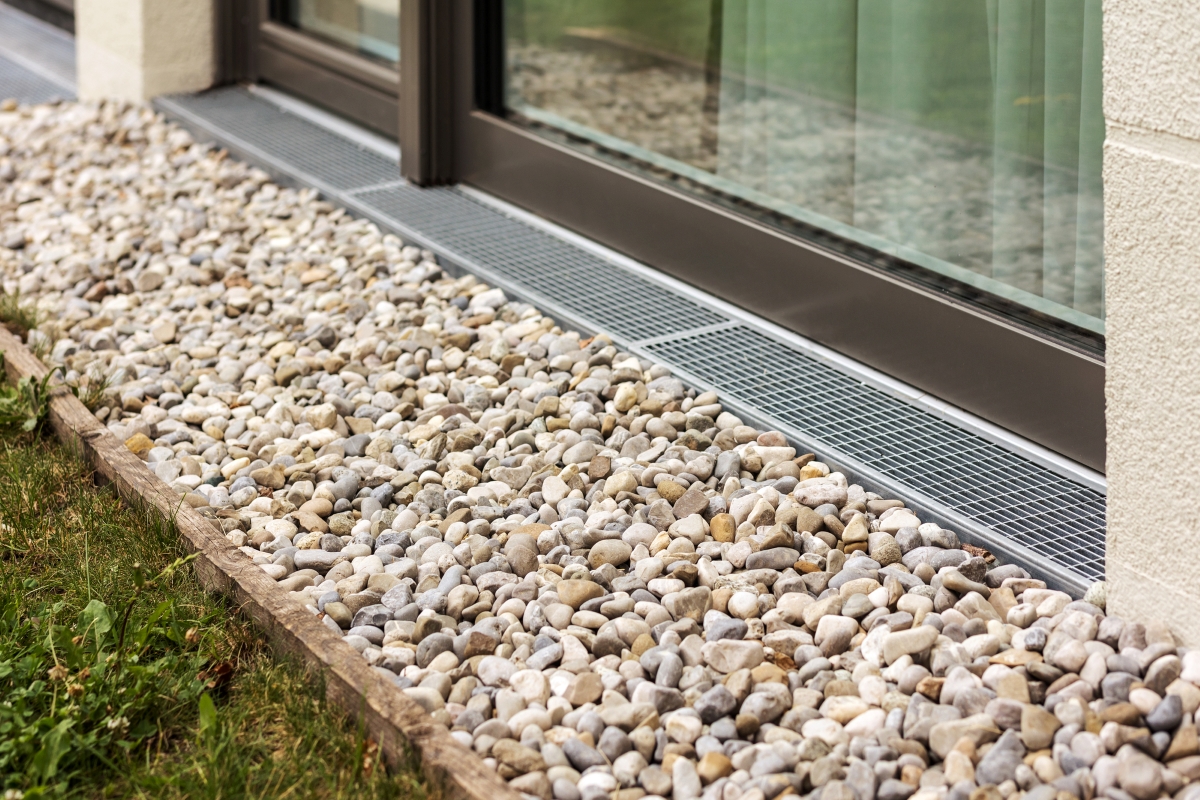We may earn revenue from the products available on this page and participate in affiliate programs. Learn More ›
Things with “French” in the title are usually fancy, right? Poodles, perfume, pastries. But a French drain has a more utilitarian purpose—redirecting standing water away from vulnerable structures or areas and toward more desirable places, such as the municipal storm drain or an underground rain barrel or cistern. “A proper French drain prevents damage, keeps yards usable, and can last 20-plus years,” according to Steve Schumacher, owner-operator of Boston Landscape in Stoneham, Massachusetts.
What is a French drain?
A French drain is a ditch in sloped ground, inset with a perforated pipe under a layer of gravel. From the surface, a French drain looks like a rock drainage ditch, and when done well, like a nice hardscaping element. You can identify a French drain on your property by finding the exposed end of pipe or a grate covering a pipe at the top of a downward slope.
How do French drains work?
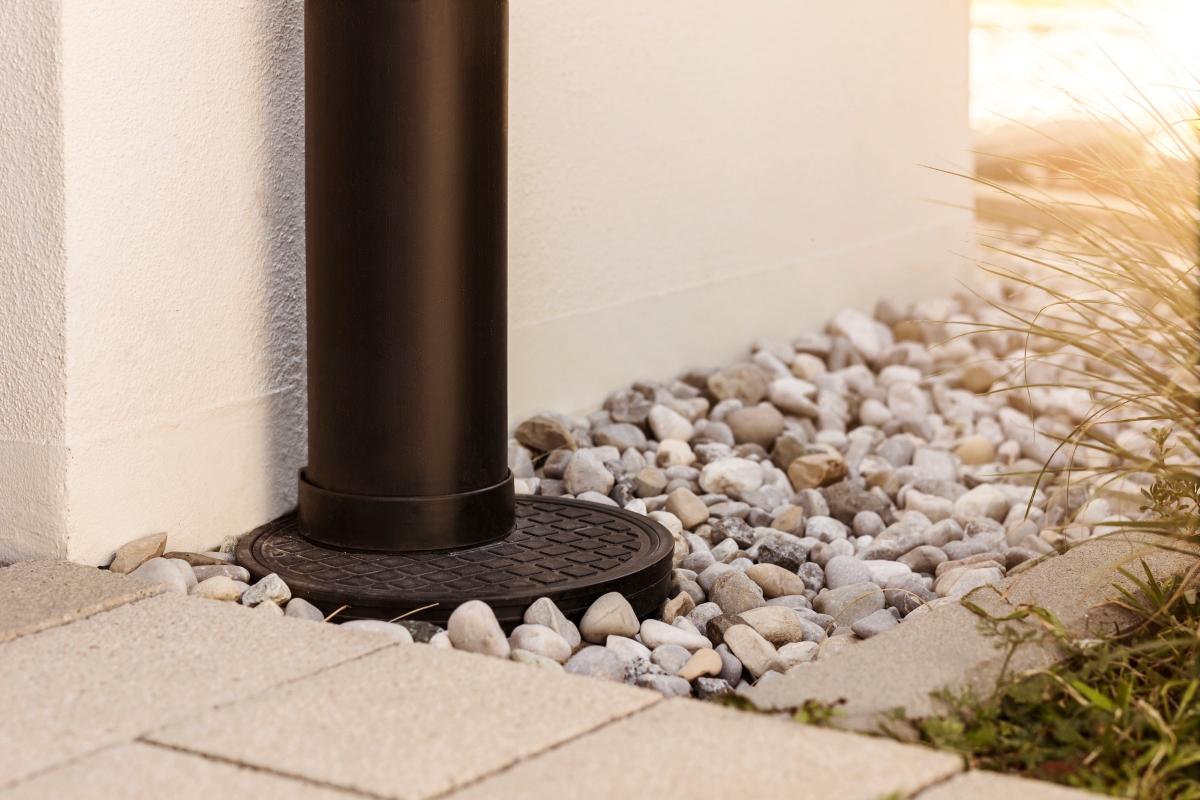
The elements of a French drain are all designed to allow water to pass through easily, preventing it from pooling; the drain is angled in such a way as to draw water away from the trouble spots. Water passes through the gravel or stone, through the holes in the perforated pipe, and into the pipe, which carries the water to a drainage area in the yard or the municipal sewer system.
Landscaping fabric is sometimes wrapped around the pipe, allowing water to pass through while preventing weeds, dirt, and other debris from clogging the holes.
Signs You Might Need a French Drain
If water tends to pool in a particular low spot on your property after a rainstorm, a French drain in your yard would alleviate that problem.
If water regularly seeps into your basement or foundation, you can install French drains around the perimeter of the foundation to collect and redirect the water away from the house.
When You Shouldn’t Install a French Drain System
While a French drain can be the solution for some swampy yards, it’s not the answer to every drainage problem. Here are some instances where you shouldn’t install a French drain.
- Your property lacks adequate slope to redirect water. If the slope isn’t steep enough to allow the French drain to direct water away from the house, it will simply pool in the French drain ditch, adding to your home’s drainage woes.
- You don’t have a satisfactory location to divert the water to. The system should drain into a waste area, a street, a municipal drainpipe, or a suitable spot in the landscape (such as near a tree or into a rain garden); it should not drain into your neighbor’s yard.
- Your project is longer than 50 feet. “With the right materials and installation, a DIYer can handle 50 feet or less,” says Schumacher. “For larger jobs, call in an expert.”
How much does a French drain cost?
A DIY French drain can cost $1,500 and up to install, depending on the length of the drain, whether you have to rent a trencher, and other factors. Hiring a professional team to do this task can quickly push up the price to $10,000 or more. The expense, however, is typically worth the investment, according to Schumacher. “I’ve seen systems protect $10,000-plus in property value,” he says. “For the cost, it’s a simple solution that pays off hugely.”
Installing a French Drain in the Basement
A French drain can also provide a solution for basements that admit water through the foundation. In these “wet” basements, water presses against the foundation and gradually leaks through. A French drain allows that water to be rerouted and deposited elsewhere.
If water continues to invade your basement despite seemingly adequate outdoor drainage, you might need to install a French drain indoors. Installation involves cutting a trench in the basement slab along the perimeter of the foundation, laying pipe in the trench, and putting in a sump pump to move water from the interior to the exterior. This is typically a job for a professional.
How to Build a French Drain: An Overview
Tools & Materials
Bobvila.com may earn a commission from purchases made through these links.
Learning how to install a French drain isn’t complicated, but it does involve a few steps and quite a bit of manual labor. This project can be completed with basic gardening tools and supplies easily acquired at home improvement stores and rock yards.
Before beginning a French drain installation, find out whether the project requires a permit. Although most communities allow French drains, some municipalities—particularly those near wetlands and other sensitive environments—do not.
1. Dig a “French trench.”
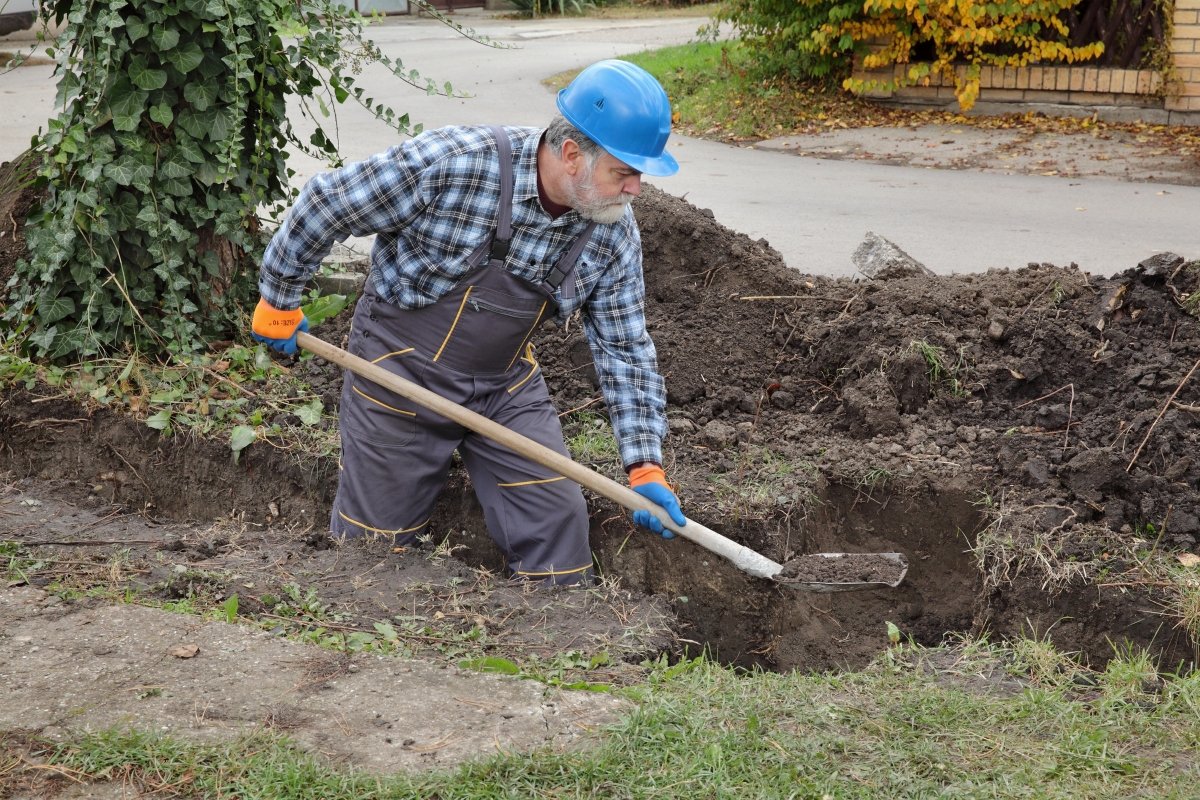
Whether installed in the yard or around the basement, a French drain follows the same process: First, dig a drainage trench, sloping in the direction you want the water to go; a slope of 1 inch for every 8 feet in length is generally recommended. Schumacher says you’re looking for “a pitch of 1 to 2 percent for adequate flow.”
To ensure the slope is adequate, attach one end of a string to a stake driven into the top of the slope, and attach the other end of the string to a stake inserted at the output point. Use a line level to ensure the string is level. Measure the length of the string from the high point to the low point. This is the run. Then measure the distance from the bottom of the trench to the string at both the high point and the low point, and subtract the smaller number from the larger number. This is the rise. Divide the rise by the run and multiply by 100 to determine the percent rise.
Because there is a direct relationship between the diameter of a drain and its relative effectiveness, make your trench no smaller than 12 inches wide, and aim for a depth of between 18 and 24 inches. If you’re installing a French drain around your foundation to prevent basement moisture, take care to position the pipe below the level of the slab or finished floor.
2. Add in the gravel.
After digging your trench, fill it with a few inches of crushed stone or gravel that’s at least ½ inch in diameter; Jason Lamprey of Square One Contractive Services in Dudley, Massachusetts, recommends ¾ inch. The rocks for French drain designs should be coarse, and they should be washed before installation. Cover the stone with water-permeable drainage fabric to discourage weed growth. Leave 10 inches of overhang along either side of the pipe; you’ll fold this back over the pipe later in the process.
3. Install an inlet grate.
You’ll want to install an inlet grate at the spot where the water is pooling significantly, which is where you’ll begin your French drain. Place the grate at ground level and, using appropriate connectors, attach it to your piping.
4. Lay piping into the trench.
Choose one of two types of pipe: either rigid PVC with predrilled holes or flexible drainpipe cut with slits. “For maximum effectiveness, use 4-inch perforated PVC pipe,” says Lamprey. PVC lasts longer, and if you encounter a clog, it can be cleaned with a pressure washer or plumber’s snake. Flexible pipe, on the other hand, is less expensive and easier to work with.
Opting for PVC? You can attach a 45-degree angle joint to the start of your pipeline and then connect the joint to a pipe that can be left sticking out of the ground for an easy-access clean-out point. Alternatively, you can attach it to the grate. Another thing to remember about PVC installations: The pipe holes should be oriented downward. Counterintuitive though it may be, French drains work by allowing water to flow into them from below.
It’s also possible to create a pipeless French drain by digging a sloped trench, lining it with landscaping fabric, and then filling the trench with gravel or stone for a dry riverbed appearance.
5. Wrap the pipes and fill the trench.
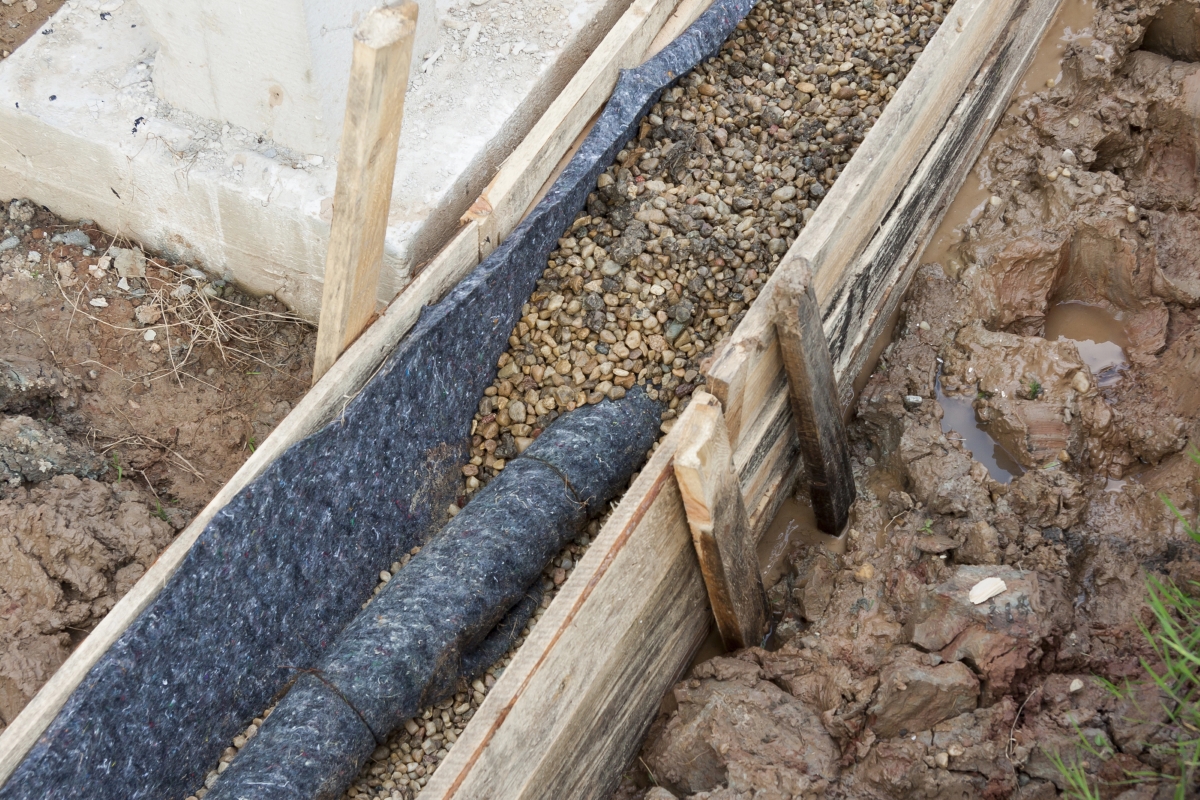
Fold the overhanging landscape fabric up and over the pipes. This will help keep dirt and roots from obstructing the system. Finally, infill the trench with gravel to grade. As an alternative, infill with gravel to a point a few inches below grade, and then add dirt to span the remaining distance. Although covering the pipe complicates future maintenance, doing so allows the French drain to be completely concealed.
6. Connect the new French drain to the municipal storm drain (optional).
If you’re lucky enough to have a municipal storm drain on your property, you can link it to your French drain to send storm runoff directly into the city sewer system.
First, dig around the base of the municipal sewer catch basin to see if it has a sleeve to which you can connect the pipe of your French drain. If not, you’ll have to go through the more complicated process of core drilling into the side of the basin and installing a pipe. This job requires specialized machinery most homeowners don’t have, so you’ll probably need to hire a pro for the job.
Once there is a connection point with the municipal storm drain, you can connect your French drain system to the storm drain inlet using any necessary adapters to account for differences in the sizes of the pipes.
7. Maintain the drain.
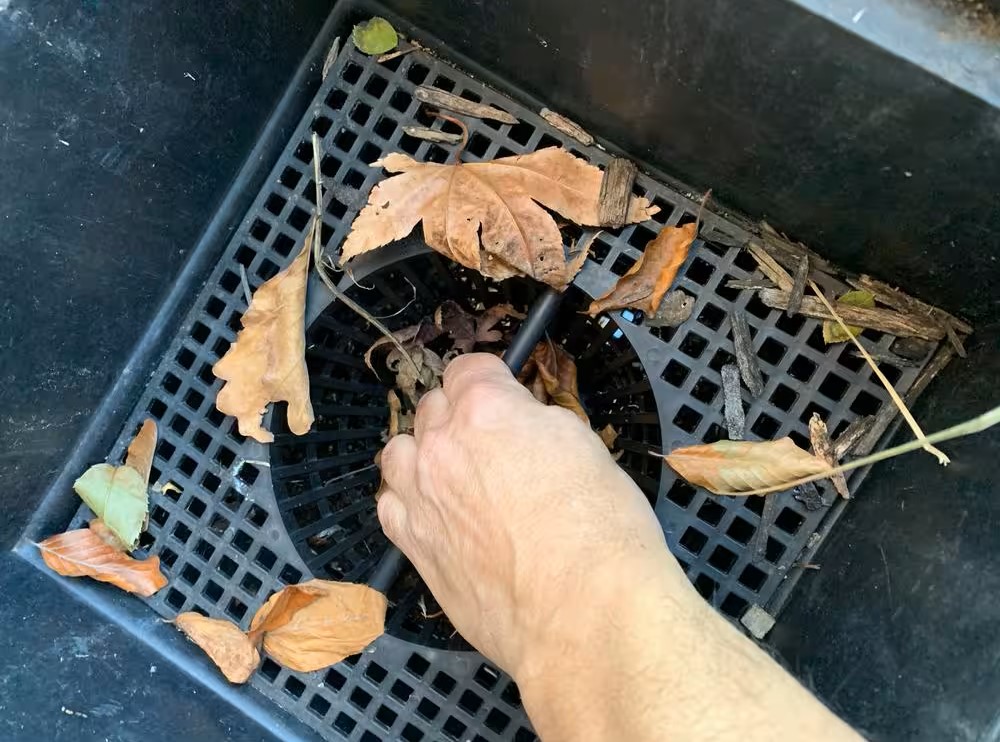
Test the effectiveness of your French drain quarterly by performing simple French drain maintenance tasks.
- Make sure the grate you installed is unimpeded by fallen leaves or other debris.
- Remove the grate and check that the initial connectors are all clear.
- Replace the grate and use a hose to run water through the grate into the pipe.
- Check the other end of the drain to confirm that water is flowing through.
Pro Tips for Installing a French Drain
- Instead of wrapping pipe with landscaping fabric, you can buy a flexible perforated pipe that comes encased in water-permeable fabric.
- If you plan to dig a long trench, consider renting a trench digger to make quicker work of it.
- Place a catchment barrel at the terminus of your drain to harvest rainwater for use in the garden.
- After trenching, expect to have a large quantity of loose dirt in need of a home. Before you begin the project, decide what you will do with the dirt.

